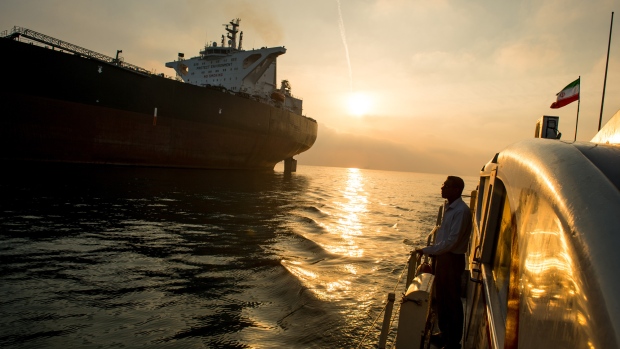May 9, 2018
Oil jumps to highest since 2014 on Iran, shrinking supplies
, Bloomberg News

Oil surged past US$71 for the first time since 2014 as American stockpiles shrank and the U.S. told crude buyers to curb purchases from Iran.
Futures in New York rose as much as 3.2 per cent a day after U.S. President Donald Trump’s said he’s withdrawing from the deal that allowed the OPEC producer to boost exports, and pledged new sanctions. At the same time, a U.S. government report showed the biggest crude inventory drop since March.
Trump “coming forward and not renewing the deal and adding sanctions back obviously is very constructive for crude oil prices. Geopolitical issues are dominating the news flow here recently, which has put a bid under crude,” said Nick Holmes, an analyst at Tortoise in Leawood, Kansas, which manages US$16 billion in energy-related assets. Today’s “pretty constructive inventory report out of the U.S. is also supportive.”
Sanctions on Iran will be re-instated after wind-down periods of 90 or 180 days, according to the U.S. Treasury. Goldman Sachs Group Inc. sees an upside risk to its oil price forecast after Trump’s actions on Iran at a time when there are risks in Saudi Arabia and Venezuela and inventories are at low levels.
“What it comes down to is, sanctions will be imposed, how sharp will the teeth of the sanctions be? That is emerging and still unknown,” said Thomas Finlon, director of Energy Analytics Group LLC in Wellington, Florida. “Regardless of what path of extremity occurs in the enforcement of new sanctions, even if it’s very limited, you have to consider this market to be rather bullish.”
West Texas Intermediate crude for June delivery advanced US$1.96 to US$71.02 a barrel at 11:32 a.m. on the New York Mercantile Exchange. Total volume traded Wednesday was about 32 per cent above the 100-day average.
Brent for July settlement climbed US$2.21 to US$77.06 a barrel on the London-based ICE Futures Europe exchange. The global benchmark crude traded at a US$6.09 premium to July WTI.
See also: Trading jumps in oil ETF as U.S. withdraws from Iran deal
Some of Iran’s biggest customers will probably oppose U.S. sanctions, according to MUFG Bank. Shipments to top buyer China, which didn’t stop its imports the last time restrictions were in place, are seen staying the same.
EIA data showed U.S. crude stockpiles slid by 2.2 million barrels last week, exceeding a Bloomberg forecast for a 1 million-barrel gain in stockpiles before the report was released. The crude draw was largely due to a decline in imports, which fell by the most since November 2016. At the same time, gasoline and distillate supplies also shrunk.




